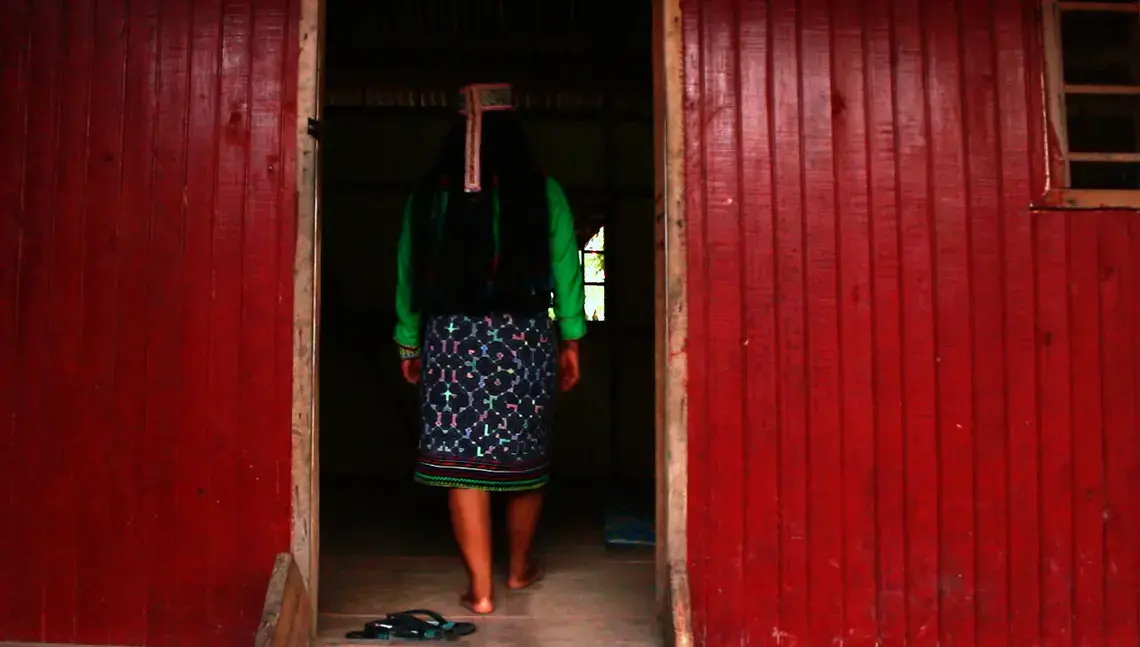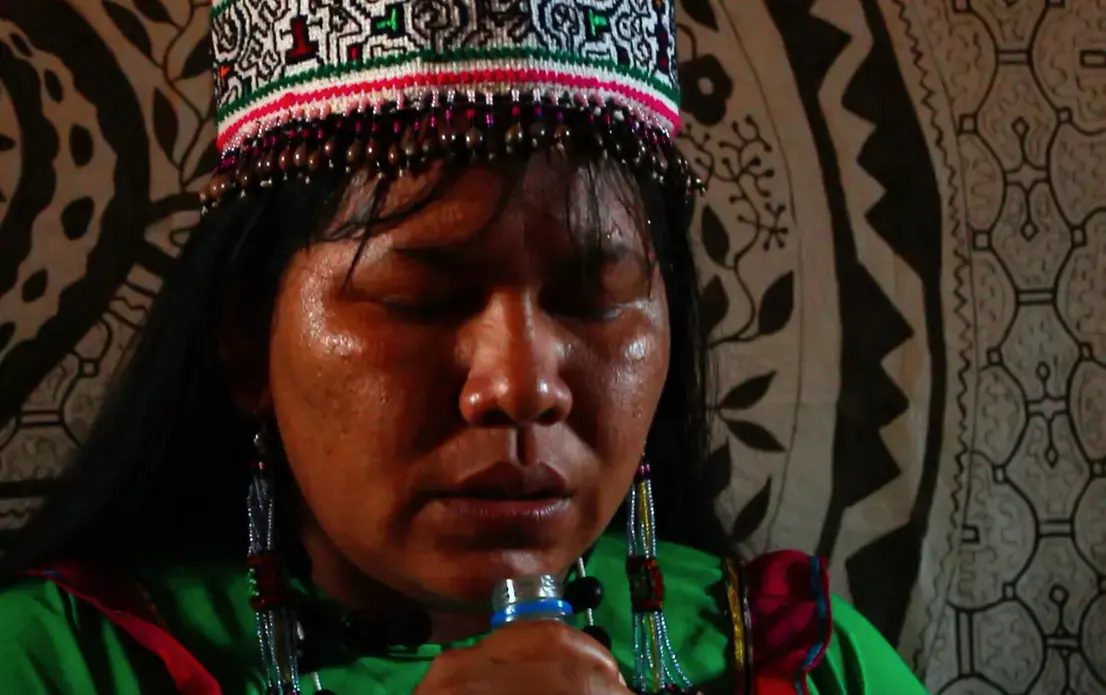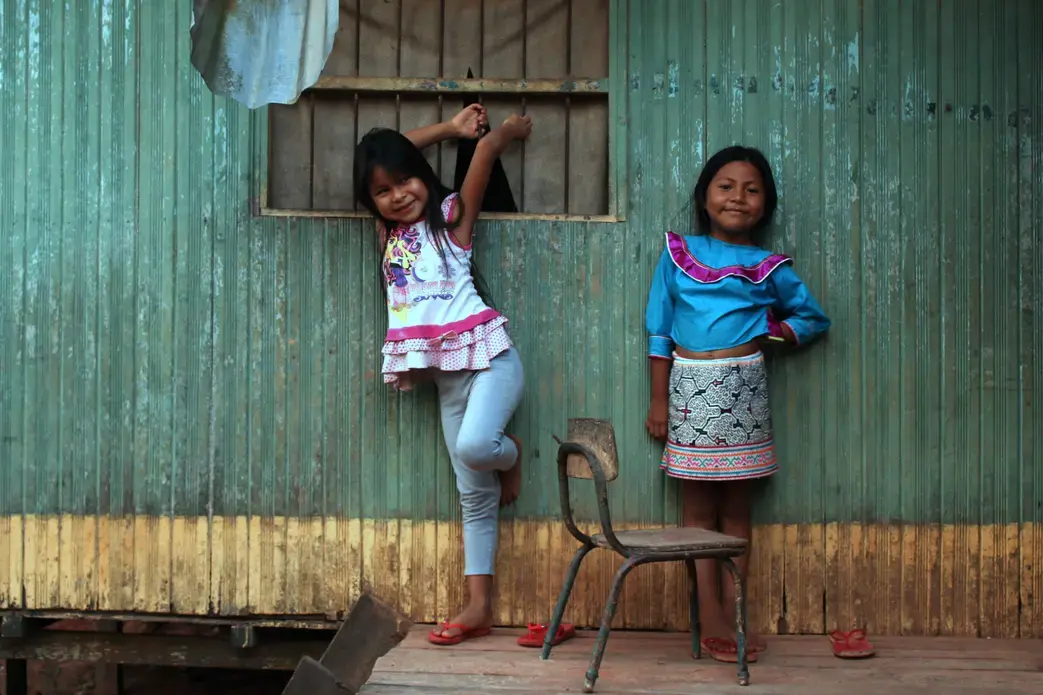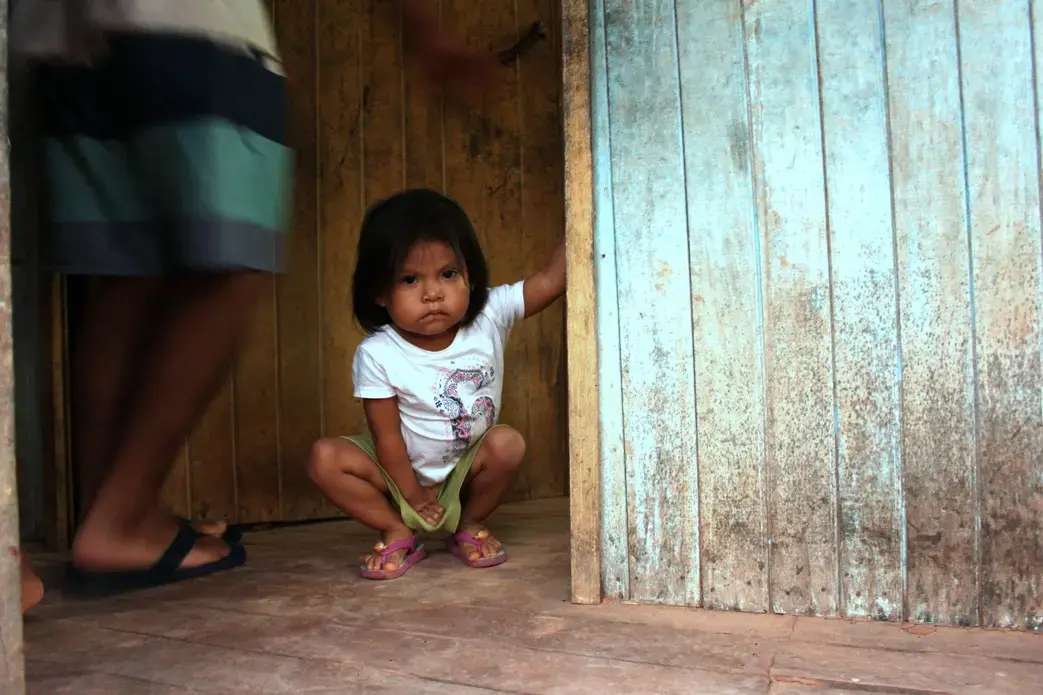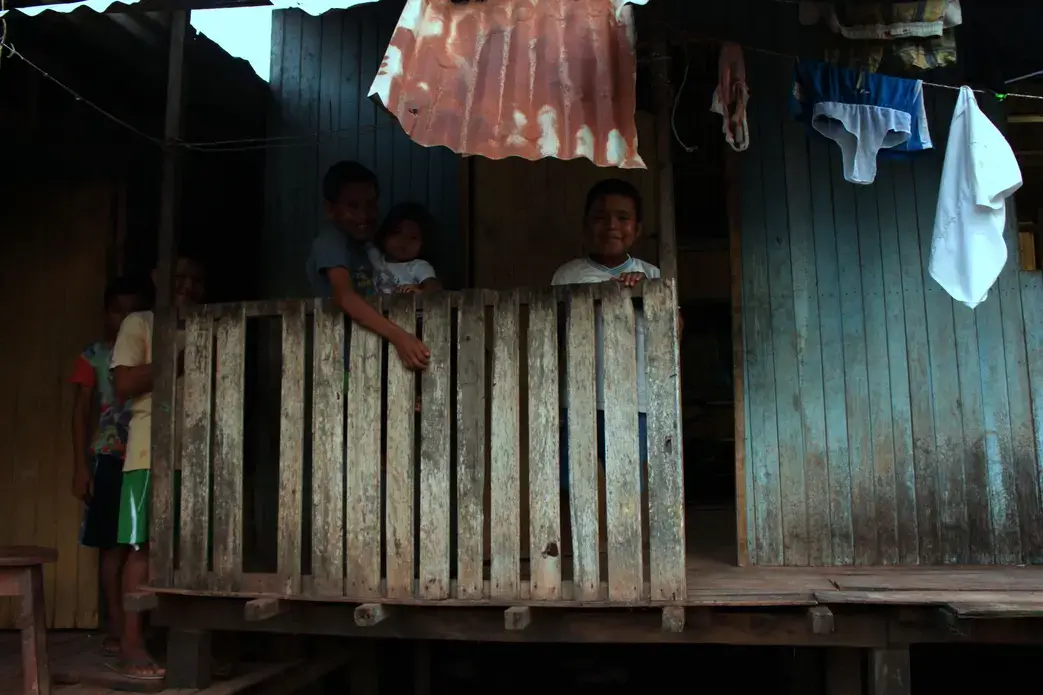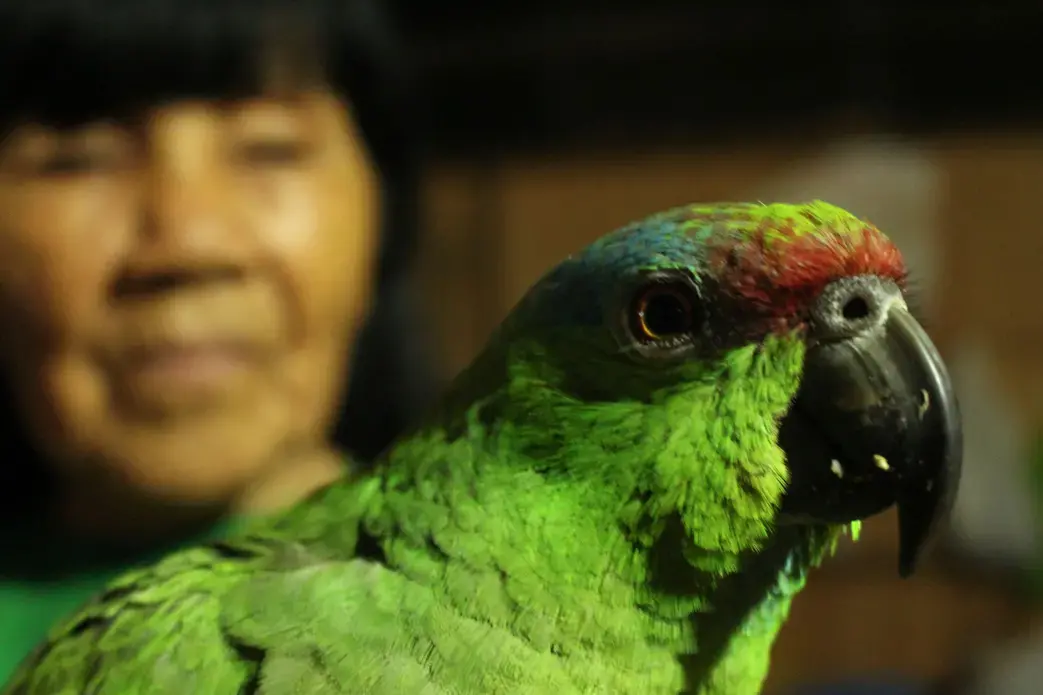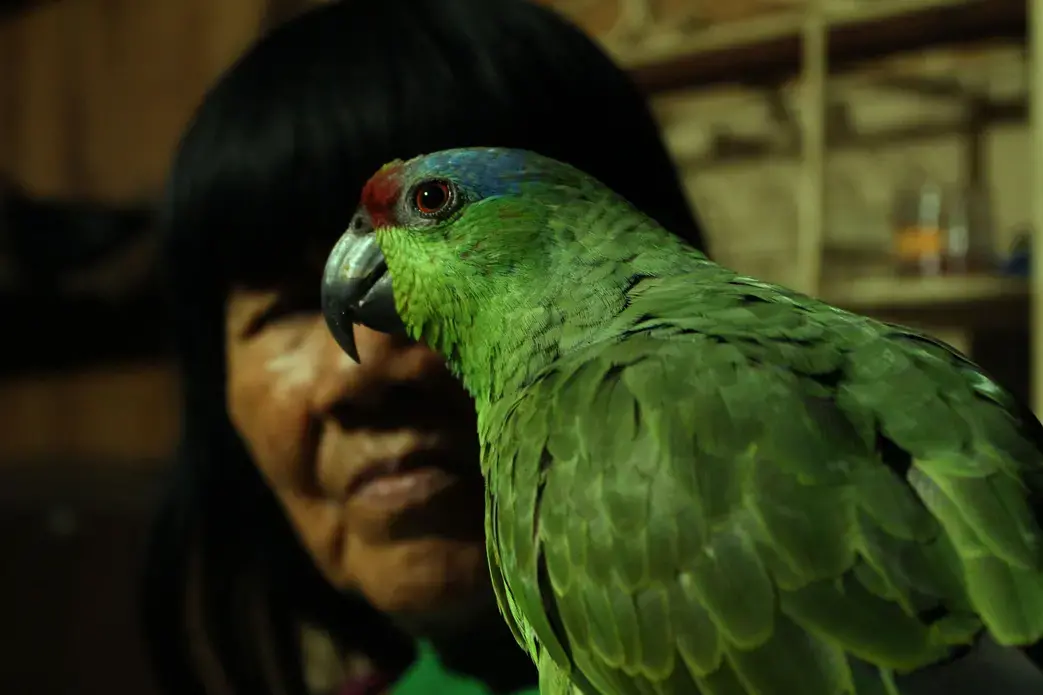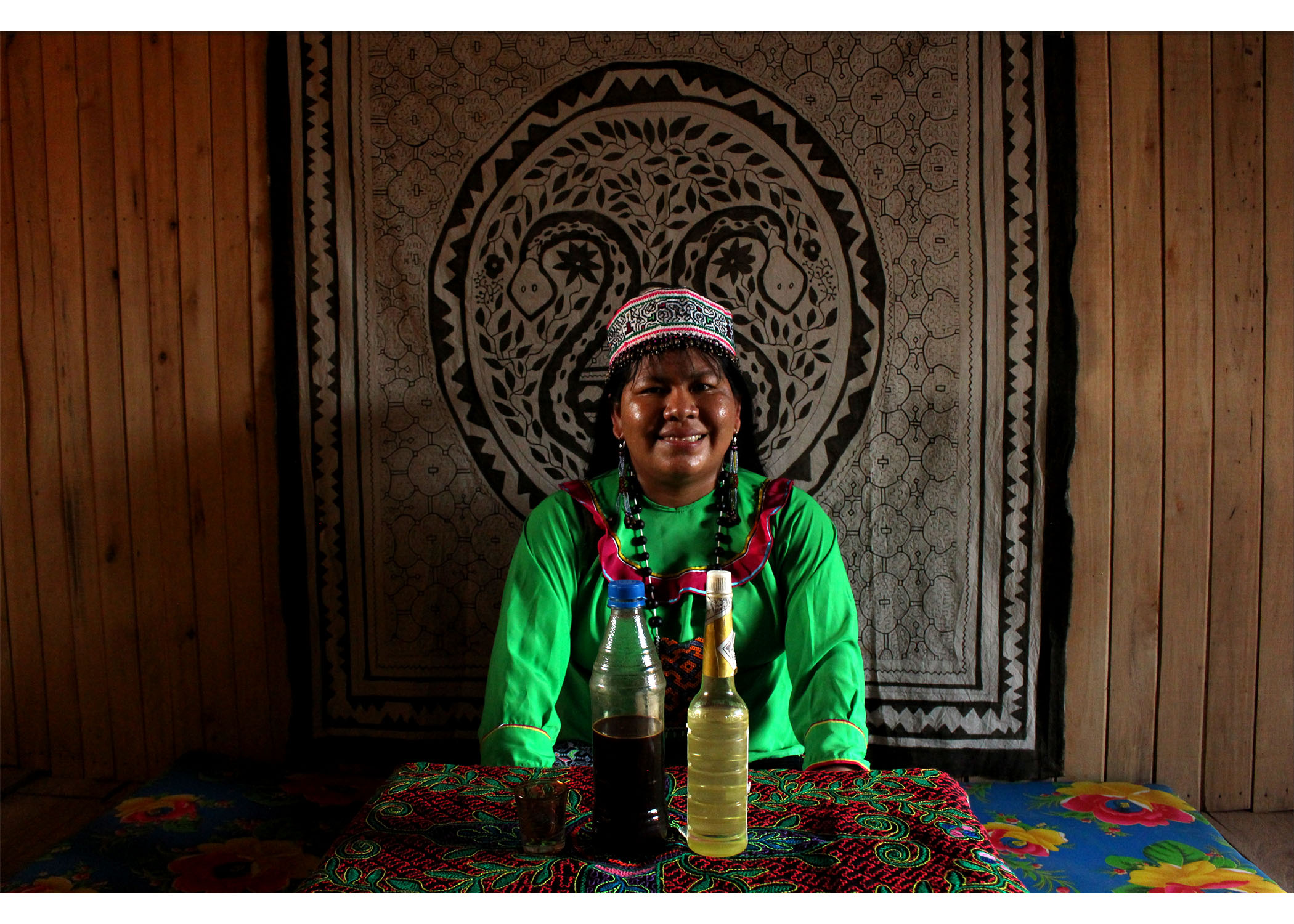
In an age impassioned by advocacy, it's sometimes easier to think of feminism as a philosophy, rather than envision it in action. In an eastern region of Peru, where the city of Pucallpa hides engulfed by Amazonian rainforest, a young woman is defying social norms.
Karina Garcia Rios, who goes by “Ayahuasca Noma,” meaning medicine woman, is the only female practicing the craft of shamanism in her community, a nontraditional path both for women of her Caco Macaya community and throughout Peru.
With the bulk of global gender-related violence occurring in Latin America, and Peru ranked as the second most lethal country for women in South America, a male-dominated society is all too real—but it hasn’t stopped Rios from pursuing her role as a spiritual exemplar.
The 33-year-old medicine woman comes from a lineage of Shipibo culture, which traditionally considered women the preparers of curative concoctions used in natural medicine and deemed men the administrators, the shamen. Today, Rios acknowledges that times have changed.
“It’s seen as a little strange to have a woman, a young woman, dedicated to medicine. But during these times not just men can be doctors, right? As women, we too can be prepared, we too can work with medicine,” Rios said. For her, there is no gender barrier, but one’s own determination is what will ultimately determine success. “There aren’t many women, but you go and tell them ‘I want to learn too’ and you go forward and practice traditional medicine.”
The most important factor, for a woman or a man, is to be completely decided on becoming a shaman, Rios says. She acknowledges that the time, sacrifice, and dedication required for the process of becoming a medicinal healer is not for everyone.
Having prepared for ten years, Rios endured periods of strict dieting, passing numerous tests, and abstaining from alcohol and sexual activity. For Rios, this also meant forgoing having children for the time being—something that could be considered a major deterrent, and a reason she believes there aren’t as many women dedicating themselves to shamanism.
“I lived it, I felt it, if you aren’t decided, you won’t complete the diets, the process. You have to abstain from everything, leave everything, relationships too, it’s difficult,” Rios said.
As far as becoming a shaman, Rios said she views men and women as the same, as both simply have to go through a process; but what she highlights as “the feminine energy” is exclusively an element of girl power.
“The love we have as women, as the mother, is something we communicate in the connection with our patients. That same motherly love and generosity is something you emit when administering medicine, the feminine energy,” Rios said. For her, these feminine attributes aren’t hallmarks of gender stereotypes, but rather, powerful traits she brings to the table uniquely as a woman in the realm of curative medicine.
A growing concern for Rios, her patients, and her community is the depletion of medicinal plants as a result of illegal logging, farming, and exportation of key species like the Ayahuasca plant used to prepare a traditional drink. The increasing scarcity of resources is resulting in increased travel times of up to ten hours to find the right plants, surges in prices for treatments, and extermination of traditional culture through misuses of medicine.
The declining supply of Ayahuasca recorded over the last six years has pointed to surges in prices that triple traditional costs. The plant has grown in popularity over the last decade, attracting thousands of Westerners to Peru, as well as Colombia and Ecuador, to drink the concoction once used as a tunnel for Shamanic visions—now headlining as a psychedelic drug. Its trendiness among the wellness community has sprouted retreats from San Francisco, to Turkey, claiming to serve Ayahuasca in its traditional form and promising cosmic awakenings. A growing misconception is that ayahuasca is a gateway to stars and colors, leading to self-proclaimed shamen, dangerous ceremonies, and cultural depletion.
Propelled by the declining supply, last month Rios launched her own nonprofit organization, “Art, Culture, and Traditional Medicine Association of the Shipibo community ISA WENI,” dedicated to reforestation, cultural preservation and education in the region.
Straddling the border between preserving tradition and expanding new horizons, Ayahuasca Noma says she hopes her efforts will be part of preserving the Amazonian laboratory of life and ancient practices—and through assuming her leading role, showcasing that being female is not the problem, but a power.



